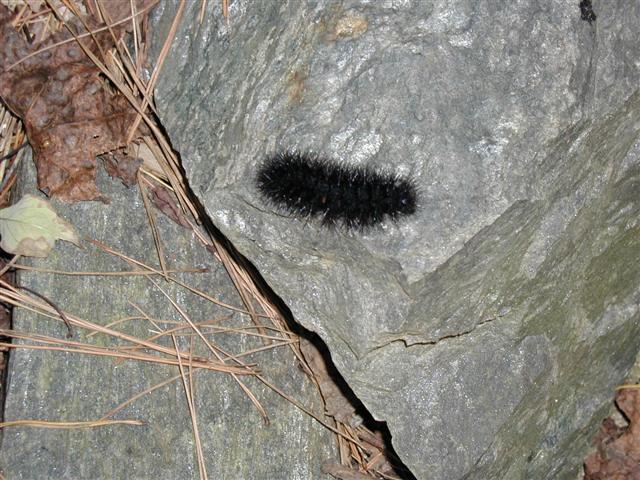

The adult is a tan moth, about 1-1/2 inches long with two dark brown stripes on each of the front wings. The forest tent caterpillar pupates in a yellow cocoon that is spun in folded leaves that are attached to the tree. Full-grown larvae have light-blue heads speckled with black and are sparsely covered with fine, whitish hairs. This caterpillar can be distinguished from the eastern tent caterpillar by the keyhole-shaped spots along its back. The larvae return to the mat to rest or to molt. Usually the larvae will concentrate their feeding on one branch at a time.

After the buds open, they start feeding on foliage. From this, they will usually move to the top of the tree to start feeding on the expanding leaf buds. When the eggs hatch, the larvae form a loose tent or mat on the trunk or branch of a tree. The egg masses are laid in similar fashion as the eastern tent caterpillar but are square at the ends. The forest tent caterpillar is quite similar to the eastern tent caterpillar. There is only one generation of this insect per year. The moths are reddish-brown and have two whitish stripes running across each wing.

The adults will emerge from the cocoons in late June or early July. This insect pupates inside of whitish-colored cocoons that may be found on tree trunks, fences or buildings. On the sides of the insect there will be blue spots located between two yellowish lines. After feeding, they return to the tent.The larvae are generally black with a white stripe down the back. From this tent, the larvae crawl out to the foliage to feed. The tent becomes larger as the larvae grow. After hatching, the small caterpillars begin to construct a tent in a nearby branch fork. The eggs will begin to hatch about the time that wild cherry leaves begin to unfold. The egg masses look like they are varnished and are about 3/4" long. The eggs are laid in ring-like masses that encircle small twigs of the host plant. They also will feed on ash, birch, blackgum, redgum, willow, witch-hazel, maple, oak, poplar, cherry, peach and plum. Before the gypsy moth was accidentally introduced into the US, the eastern tent caterpillar was considered to be one of our most important pests of shade trees.Įastern tent caterpillars prefer wild cherry, apple and crabapple. Large numbers of this caterpillar usually occur in intervals of about ten years. The eastern tent caterpillar is a native insect that was first reported in 1646.


 0 kommentar(er)
0 kommentar(er)
